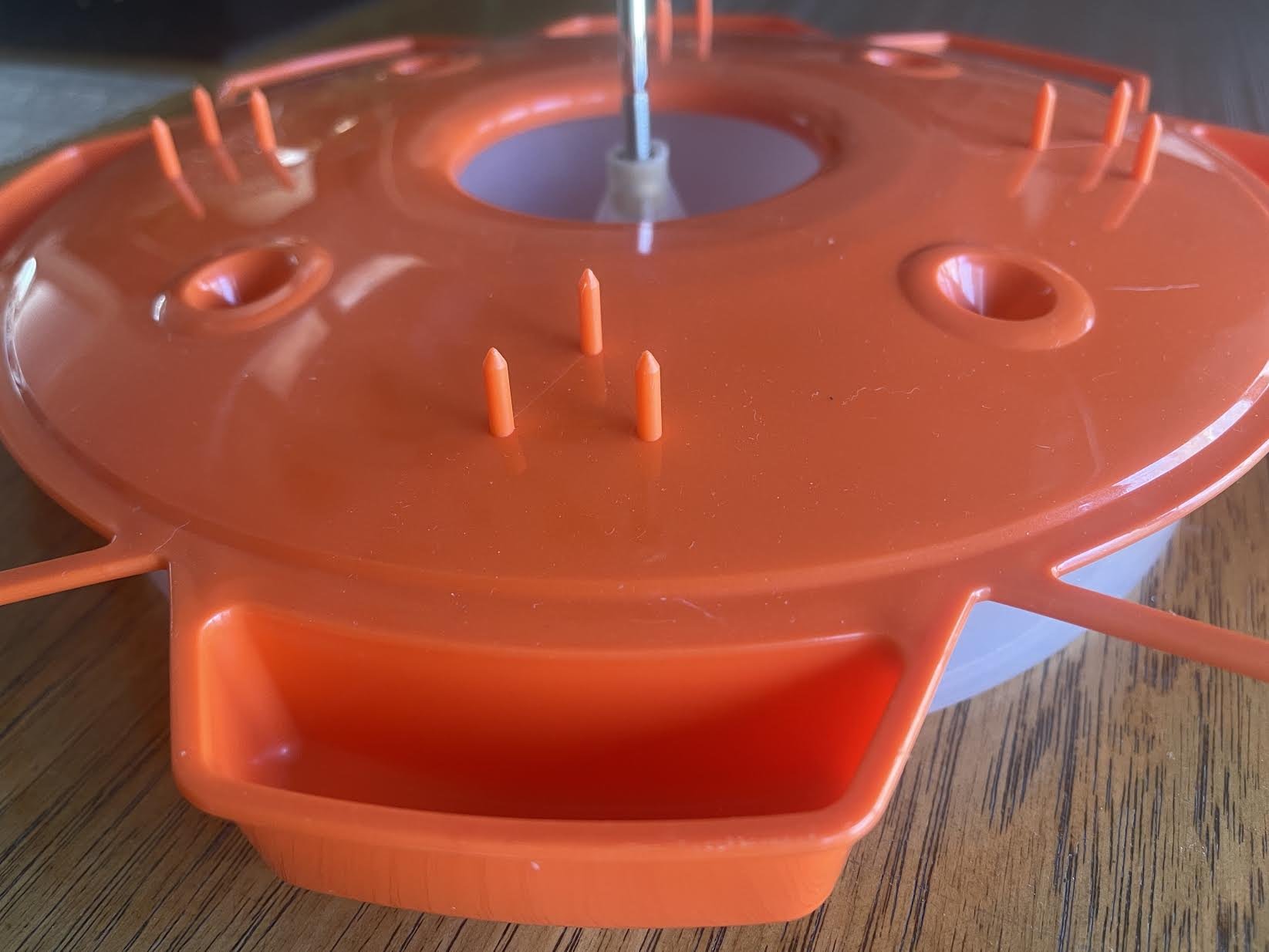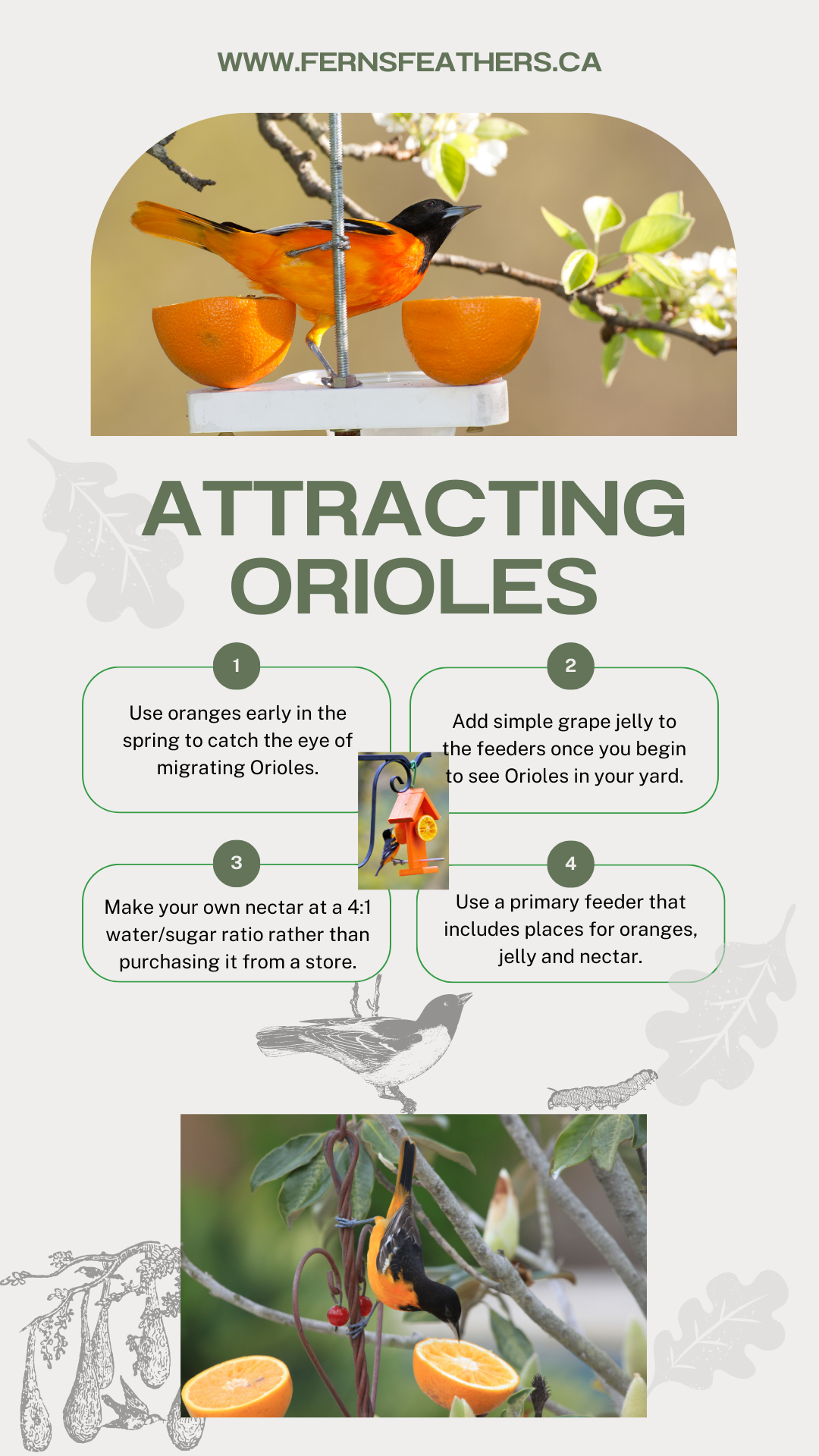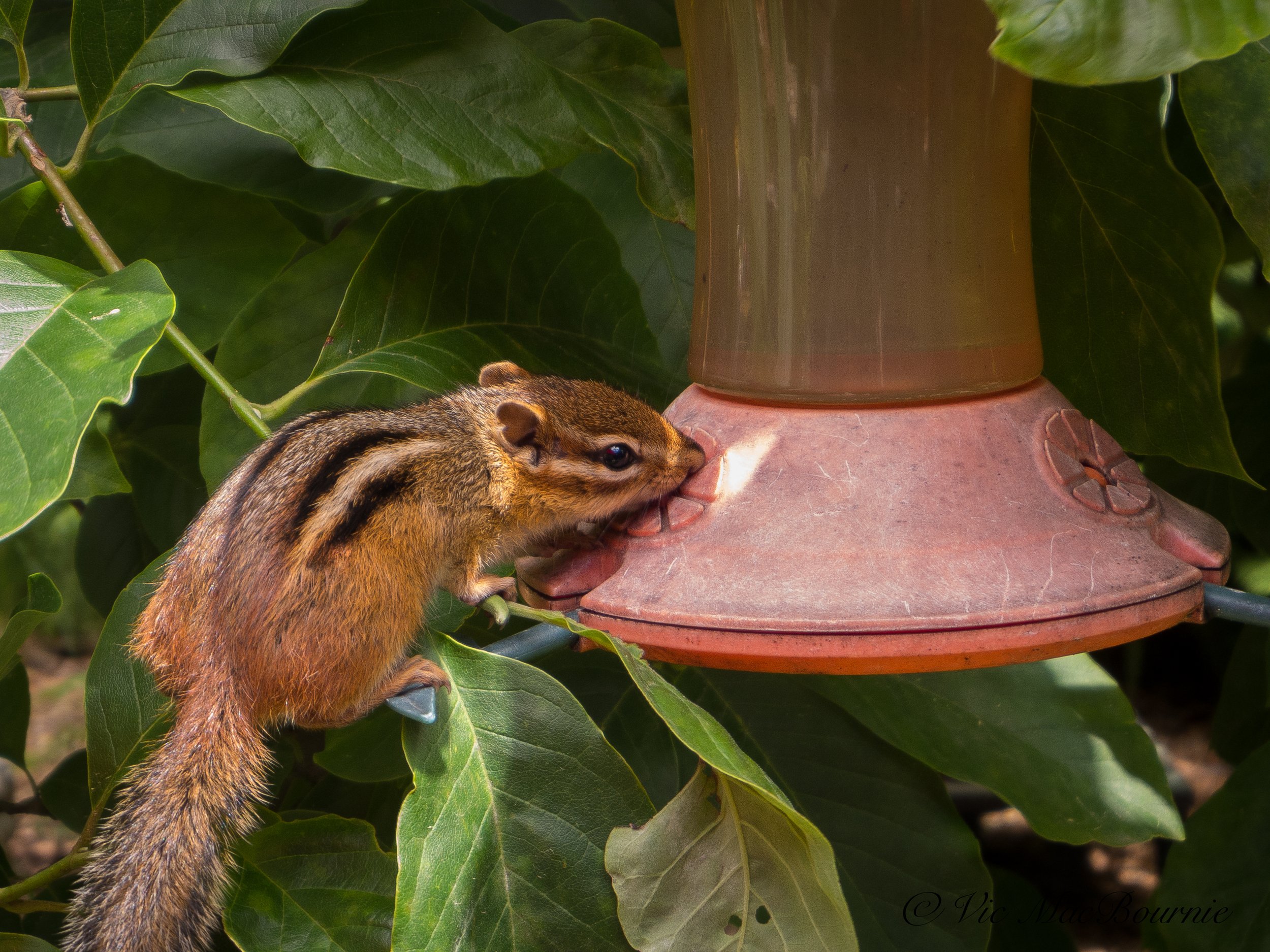Best Oriole bird feeders
Look for a high quality all-in-one feeder
Attracting Orioles to your backyard starts with giving these colourful birds a proper feeder that provides them with a variety of their favourite foods, including oranges, grape jelly and, of course, sugar water or nectar.
The best feeders provide areas for all three food sources, but there may be reasons to provide feeders that focus on one or two of the food sources at different times of the year.
In our yard, I use a number of different feeders – ranging from a simple nectar feeder similar to a hummingbird feeder, to DIY Jelly feeders and orange-half holders, to commercially bought Oriole feeders that hold nectar and a half orange to one that holds all three.
If you are buying a new feeder, I would probably aim for a feeder that holds all three – nectar, oranges and grape jelly.
However, this page of Oriole feeders from Amazon is a clear indication of how many styles of feeders are available.
These oriole feeders from Etsy show how many varieties are available and how easy some styles are to create as a DIY project.
These Oriole feeders from Maine-based Gardener’s supply are good choices as are these high quality Oriole feeders from the Canadian and American based Wild Birds Unlimited.
Where to locate oriole feeders
However, a feeder that provides all three of these foods might not necessarily prove to be very successful at attracting or encouraging the birds to return to the yard. Where the feeder is located in the yard, and how accessible it is to the birds can play an important role in the success of attracting orioles and keeping them coming back to your yard.
When you first put up the feeder, make sure that birds flying over head can see it. Tucking it away in a tree might seem like a great idea, but many of the migrating orioles will likely miss it and fly on by.
Hanging the feeder from a hook out in plain site is a good idea. You can hang it on your main bird feeding station, but Orioles generally prefer a quieter area, so finding a spot away from the busiest area of the garden is preferred.
More on attracting Orioles to your yard, on my earlier comprehensive post.
Once the birds find the feeder(s) however, I have found that they feel comfortable feeding with other birds around them. At this point, I might put up a feeder or start feeding oranges on my main feeding station in addition to the original feeder location.
I have had as many as 12 Orioles see image above) on our main feeding station working oranges, and grape jelly among the seed-eating birds like Blue Jays and Cardinals. The stylized steel branch is the perfect spot to hang additional feeders and the wire leaves is a perfect spot to stuff orange halves into for the Orioles.
Keeping them around and where do Orioles nest?
Orioles can be a little picky when it comes to setting up their summer homes. Remember, these are nest-dwelling birds that do not use bird houses or tree cavities. They create hanging nests fairly high in trees where they are safe from most predators. We had a pair nesting in a mature maple in our front yard one year. If you do not have tall trees nearby, you might have some difficulties keeping the birds around all summer.
Insects are key to keeping Orioles all summer
It’s also important to remember that orioles are primarily insect-eating birds. They are attracted to your yard with the oranges and grape jelly as a quick energy hit after a long migration, but will only stick around if there is an abundance of insects to feed their young.
With that in mind, you might also want to set out a dish of meal worms near their feeder to attract them and keep them around longer.
Your best chance to attract Orioles is spring migration
But that’s not to say that you can’t attract them to your yard during spring migration with orange halves, nectar and jelly.
If the feeding stations fail to provide the Orioles with what they need, they will often simply stop off for a quick meal and move on. And that’s okay too. Having these bright colourful birds around for just a few days in spring is still a joy.
That stay could just be for a few minutes to an afternoon or even a couple of days, but many of the birds will eventually move on.
If they do move on, don’t take it personally. It may not mean your feeding setup was not to their liking, but that their nesting site is traditionally farther north in their annual migration.
The key is to make your yard so enticing, that first-time nesting pairs and others choose your yard to set up their homes.
Oranges are your first line of enticement
In my years of attracting Baltimore Orioles to our garden, I have found that oranges are the best first impression to provide the birds to encourage them to your yard. After spending the winter in Florida and other warm climates where oranges are common food sources, it’s understandable why Orioles would recognize the orange halves at our feeders.
My first feeder did not come with a specific holder for an orange half. Instead, I simply insert the orange half over the steel rod that the feeder hangs from. This allows the Orioles to grip the rod and feed at the same time. Changing the orange halves to keep a fresh supply is easily done.
Many of the new feeders have spikes where the orange halves can be positioned. If you are buying a new feeder, make sure it has a location to display either orange halves, or orange quarters.
Don’t forget to stock up on grape jelly
If oranges are what attracts the Orioles to your yard, it’s grape jelly that keeps them coming back.
Our Orioles just love their grape jelly mixed with a little water. Our newest feeder even has three small reservoirs that are perfect locations to add a spoonful of grape jelly.
In the past, I created my own DIY grape jelly containers out of orange plastic caps from a food container that I hung near the main nectar feeders.
I soon realized, however, that the spent orange halves were also good containers to fill with grape jelly once the Orioles had finished with the oranges. The pulp in the oranges however, does absorb the jelly water making the halves short lived as an ideal feeder.
A small glass dish filled with grape jelly mixed in a little water is a favourite for our Orioles and it is easy to clean an refill on a daily basis.
One of our resident chipmunks took a liking to the nectar in the Oriole feeder this past summer.
Nectar is good for a burst of high-energy
One of the first feeders I purchased was a nectar feeder that looked like an orange-coloured hummingbird feeder. It has never performed that well for us in attracting Orioles, but one of our resident chipmunks sure took a liking to it last year. Everyday, the chipmunk would come and get its hit of sugar water from the feeder.
It enjoyed the nectar so much that it wouldn’t stop drinking no matter how close I got to it to get a picture.
Oriole nectar should be mixed the same as hummingbird nectar. Do not buy the store-bought nectar packages with the orange food colouring. Just mix 1 part sugar with 4 parts of water to create the nectar. I like to boil the water before using it to clear out any impurities in the water. I also find it stays clear longer if it is boiled.
There are lots of high quality Oriole nectar feeders that are available. This plastic feeder from Home Hardware is an excellent choice. Don’t be surprised if it also attracts hummingbirds.
Best Oriole feeder conclusion
There are so many high quality Oriole feeders available today that it is difficult to recommend one brand or style. In fact, if you are like me you probably have Orioles visiting your hummingbird feeders more than your actual Oriole nectar feeders. I believe that this is because the Orioles are more accustomed to seeing the red hummingbird feeders and know there is a treat waiting for them inside.
The fact that Orioles are attracted to our DIY feeders as they are the commercial varieties also says a lot about how picky they are or are not when it comes to their favourite food.
But providing them with oranges, jelly and nectar in one convenient spot is your best chance at making a first impression with these wonderful birds. If a combination feeder can get their attention, you can use more dedicated style feeders to keep them coming back.
There are feeders that take an entire jar of grape jelly that some have reported are excellent magnets for the orioles. I can’t help but think these also attract their share of bees and wasps to the sugary jelly. They may even get moldy if the jelly is not eaten quickly enough.
I have also seen beautiful handmade Oriole feeders available on Etsy that would make a lovely addition to your garden. Most of these are excellent secondary feeders that could be added once you have success attracting and keeping the orioles around all summer.
One last thing to remember, Orioles enjoy a dependable source of water as well. Don’t forget to ensure water is available.
One of my favourite series of images I was able to capture was a female Oriole bringing her entire brood of babies down to our on-ground bird bath for most likely their first bath. That was a frenzy of excitement for both the birds and the photographer (image above) and a reminder of why it’s worth the effort to attract these beautiful birds to your yard.






